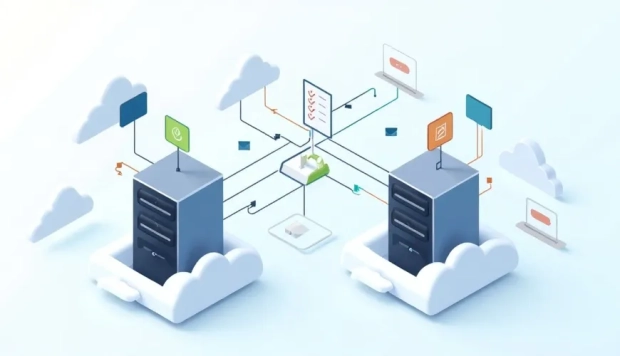The Nuts and Bolts of IT: Mastering Physical Infrastructure Management

Physical infrastructure management has become a fundamental aspect for businesses aiming to thrive in the rapidly evolving technological landscape. As organizations continue to expand and adopt various technologies, a keen focus on the physical elements, ranging from servers to racks and cabling, becomes essential. This article delves into the intricacies of managing these components effectively to enhance performance, reliability, and security within an organization.
Understanding Physical Infrastructure
To appreciate the significance of physical infrastructure, one must first recognize how it serves as the backbone for IT operations. Physical infrastructure includes hardware elements like servers, networking equipment, and storage devices, all of which must work together to maintain seamless operations. Effective management of these components involves not just oversight but a strategic approach to resource allocation, maintenance, and optimization.
The physical layout has a significant impact on performance and scalability. A thoughtfully designed environment allows for efficient airflow, power management, and easy access, which are critical in preventing system failures or downtime. Mismanagement of these elements can lead to severe operational hiccups and financial losses.
Key Components of Physical Infrastructure
When addressing physical infrastructure, understanding its key components is vital. These typically include servers, networking equipment, power and cooling systems, storage solutions, and security devices. Each plays a distinct role in ensuring that data flows smoothly and operations are maintained without disruption. Reliability hinges on each component functioning correctly, where the servers provide computational power, networking equipment facilitates connectivity, and power systems ensure that everything is reliably running.
Cooling systems are fundamental in preventing overheating, particularly in data centers where equipment generates significant heat. As infrastructure needs become more specialized, so does the demand for tailored hardware solutions. For those seeking customizable options that merge durability with design, you can go here to explore custom electrical enclosures that meet unique operational requirements. These enclosures can be adapted to a range of environments, helping ensure both performance and protection are maintained over time.
Capacity Planning and Optimization
Capacity planning involves forecasting future infrastructure requirements based on anticipated growth, changes in workload, or shifts in business strategy. By analyzing current usage trends, IT managers can identify potential capacity issues before they become problematic. Monitoring tools can assist in providing a clear picture, offering insights into how resources are being allocated and where inefficiencies may arise.
Optimization becomes critical in ensuring that infrastructure can handle peaks in demand without incurring excessive costs. Consolidation, virtualized environments, and the utilization of cloud resources are techniques that many companies are leveraging to ensure seamless scalability. With the rapid shifts in both market and technology landscapes, agility in capacity planning has never been more essential to remain competitive.
Implementing Robust Security Measures
Security must be front and center in physical infrastructure management. This not only pertains to cybersecurity but extends to physical safety as well. Data centers and server rooms should be equipped with robust access control systems, surveillance, and environmental monitoring to deter physical breaches and ensure the integrity of the systems.
Regular audits and assessments can help identify vulnerabilities in both hardware and software layers. Implementing strategies such as multi-factor authentication, encryption, and regular patch management can further strengthen an organization's defenses against attacks. A comprehensive approach to security not only protects data but also maintains the organization's reputation and trustworthiness.
Sustainability in IT Infrastructure
As global awareness of environmental issues increases, organizations are encouraged to integrate sustainable practices into their physical infrastructure management strategies. This can range from energy-efficient cooling solutions to renewable energy sources that reduce reliance on traditional power grids.
Utilizing advanced technologies such as liquid cooling systems and efficient rack configurations optimizes energy usage while maintaining performance. Green IT initiatives not only fulfill corporate social responsibility but can also lead to significant cost savings. Organizations must evaluate their infrastructure continuously to discover opportunities for enhancements that align with sustainability goals while supporting business objectives.
Future Trends in Infrastructure Management
Looking ahead, several trends are likely to shape the future of physical infrastructure management. The move towards edge computing, where data processing occurs closer to the source, prompts new considerations for physical layouts. This paradigm shift influences how resources are distributed and how facilities are optimized for proximity and performance.
Artificial intelligence and machine learning also promise to streamline management processes. Predictive analytics can facilitate proactive maintenance, reducing downtime and enhancing operational efficiency. Automation in provisioning and monitoring reduces human error, allowing IT staff to focus on strategic initiatives rather than routine tasks.
The Role of IT Professionals in Infrastructure Management
The evolving landscape of physical infrastructure management underscores the need for skilled IT professionals who can navigate both the technical and strategic aspects. Continuous learning and adaptation to new technologies are imperative for those in the field. Training across emerging trends and tools will ensure that teams are well-equipped to handle both current demands and future challenges.
Fostering a culture of collaboration among IT personnel can enhance problem-solving capabilities, driving innovation in how infrastructure challenges are approached and managed. Engaging in communities, attending conferences, and participating in certifications can provide invaluable networking and knowledge-sharing opportunities.

Successfully managing physical infrastructure requires a blend of technical expertise and strategic foresight. By understanding the core components, focusing on capacity planning, implementing robust security measures, and adopting sustainable practices, organizations can build a resilient infrastructure that aligns with their business goals. Looking forward, keeping abreast of future trends and investing in talent will be decisive factors in navigating the complexities of infrastructure management effectively.



